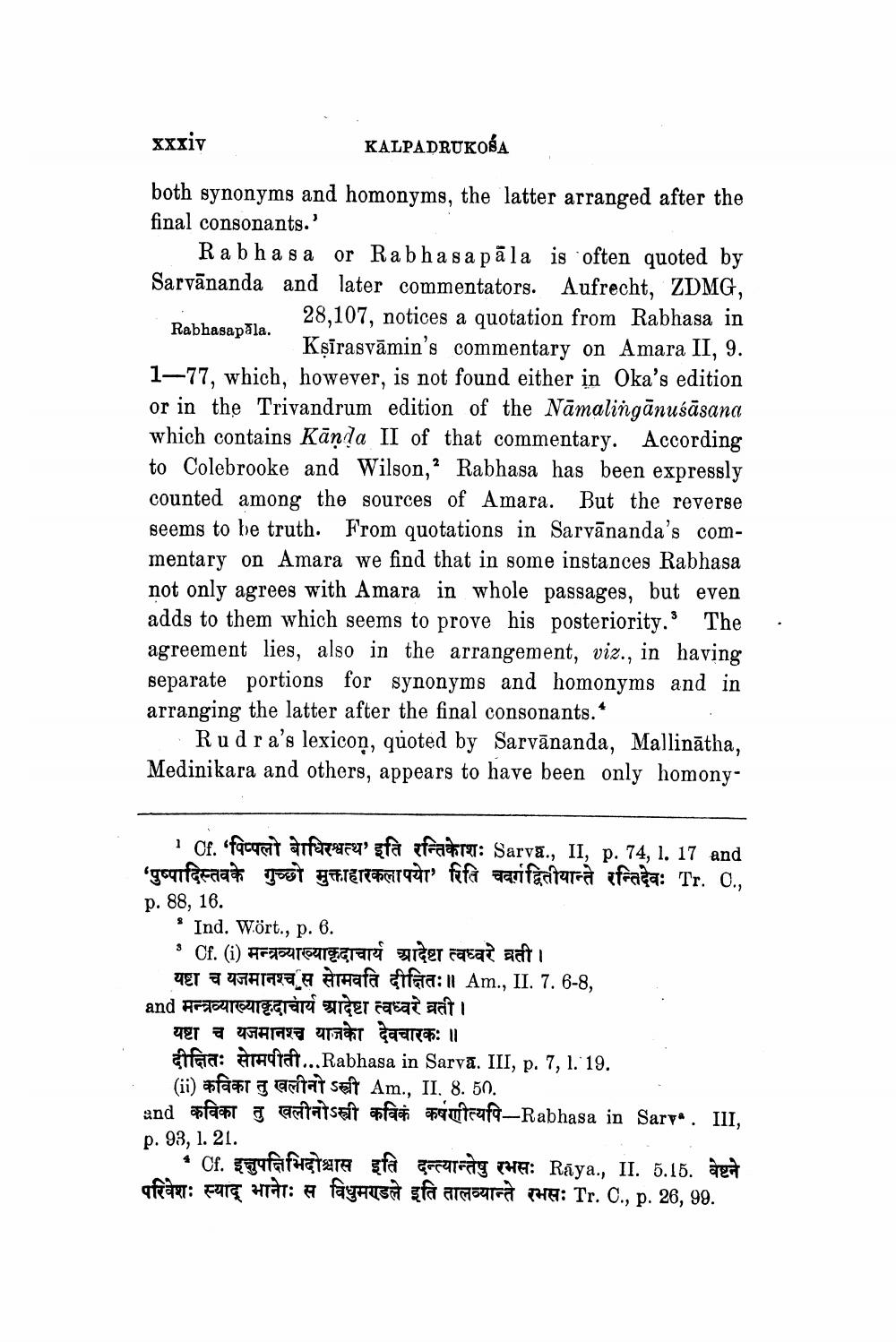________________
xxxiv
both synonyms and homonyms, the latter arranged after the final consonants."
KALPADRUKOSA
Rabhasapala.
2
Rabhasa or Rabhasapala is often quoted by Sarvananda and later commentators. Aufrecht, ZDMG, 28,107, notices a quotation from Rabhasa in Kṣirasvamin's commentary on Amara II, 9. 1-77, which, however, is not found either in Oka's edition or in the Trivandrum edition of the Namalingānusāsana which contains Kanda II of that commentary. According to Colebrooke and Wilson, Rabhasa has been expressly counted among the sources of Amara. But the reverse seems to be truth. From quotations in Sarvananda's commentary on Amara we find that in some instances Rabhasa not only agrees with Amara in whole passages, but even adds to them which seems to prove his posteriority. The agreement lies, also in the arrangement, viz., in having separate portions for synonyms and homonyms and in arranging the latter after the final consonants.*
Rudra's lexicon, quoted by Sarvānanda, Mallinātha, Medinikara and others, appears to have been only homony
1
Of. 'faqat afara fà fa: Sarva., II, p. 74, 1. 17 and 'पुष्पादिस्तव के गुच्छो मुक्ताहारकला पया' रिति चवर्गद्वितीयान्ते रन्तिदेवः Tr. O., p. 88, 16.
Ind. Wört., p. 6.
Cf. (i) मन्त्रव्याख्याकृदाचार्य आदेश त्वध्वरे व्रती ।
या च यजमानश्च स सोमवति दीक्षितः ॥ Am., II. 7.6-8,
3
and मन्त्रव्याख्याकृदाचार्य श्रादेष्टा त्वध्वरे व्रती ।
यष्टा च यजमानश्च याजकेा देवचारकः ॥
दीक्षितः सोमपीती... Rabhasa in Sarva. III, p. 7, 1. 19.
(ii) afaasta acitat set Am., II. 8. 50.
तु
and aविका तु खलीनोऽस्त्री कविकं कर्षाणीत्यपि - Rabhasa in Sarv . III, p. 93, 1. 21.
1 Cf. इक्षुपक्षिभिदोश्वास इति दन्त्यान्तेषु रभसः Raya., II. 5.15. वेष्टने परिवेशः स्याद् भानेोः स विधुमण्डले इति तालव्यान्ते रभसः Tr. C., p. 26, 99.




